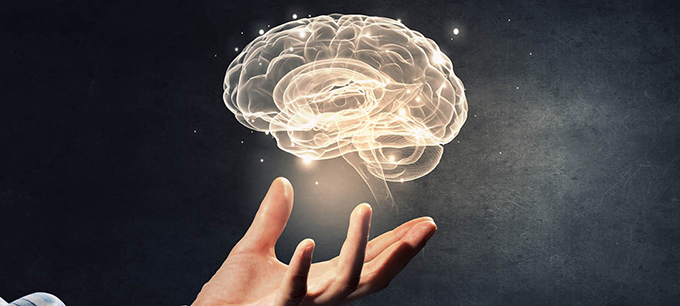
As educators, parents or even as students, we have often wondered what are the ins and outs that lead to learning at certain times being presented with greater or lesser difficulty: why some students learn more than others when faced with the same content and methodologies of teaching, why more or less information is withheld, why we are more or less motivated to learn… Ultimately, what we want to know is how to learn.
All the questions raised have been dealt with in different theories or theoretical models about learning, which have delved into the different pedagogical teaching methodologies, motivation, learning strategies, management of study time, the previous knowledge available of the subject, meaningful learning or the use of technologies.
But we must focus on the importance of understanding the brain as an essential governing body for the teaching and learning process to come to fruition. As the Canadian psychologist and neuroscientist Donald Hebb said , “learning is a new relationship that is created between neurons and remembering is maintaining that relationship socially active.”
We do not know the ins and outs of the brain
Look how long ago Hebb (1950) said this, and we still do not contemplate in our study plans a section or cross-sectional subject aimed at teaching our students what are the inner aspects of the functioning of their brain and what can be done to get the most out of it. maximum profit.
In the last decade, and thanks to research in Neuroscience, we have reached a remarkable knowledge about the brain. Unfortunately, it can be said that this knowledge has remained more in the laboratories than materialized in a practical way in the curricula and in the new pedagogical methodologies of the classrooms, and proof of this is the large number of existing neuromyths that indicate which is our ignorance of the brain.
What the teachers know
For this reason, and with the aim of quantifying the general knowledge about the brain and the prevalence of these neuromyths among teachers, we refer to these studies:
- The first is entitled ” Neuromyths in education: Prevalence and predictors of misconceptions among teachers ” and was aimed at a sample of 242 primary and secondary school teachers from the UK and the Netherlands.The teachers answered a questionnaire of 32 questions developed ad hoc to measure the prevalence of neuromyths. Among the questions asked we find these examples: Do we use our brain 24 hours a day? Do children have to acquire their native language before learning a second? If they don’t do it like that, they will never finish mastering any of the languages? Do we only use 10% of our brain? Do the right and left hemispheres always work together?
The results of the study concluded that, on average, teachers believed in 49% of neuromyths, particularly those related to commercialized educational programs. These findings suggest that teachers who are excited about the possible application of neuroscience findings in the classroom have a hard time distinguishing pseudoscience from scientific facts .
- The second study is entitled “ Neuromyths in Education: Prevalence among Spanish Teachers and an Exploration of Cross-Cultural Variation ” . The study participants were 284 teachers from 15 Spanish autonomous communities, who had to answer the same questionnaire as the previous study.The faculty was made up of nursery, primary, and secondary teachers, vocational education teachers, and teachers who worked at more than one educational level. The results obtained were similar to those previously described.
Teachers did not recognize 49.1% of neuromyths on average. Also, 19.6% were labeled “don’t know.” The most prevalent neuromyths were:
- “Stimulus-rich environments enhance the brains of preschoolers,” 94% of teachers believe.
- “People learn best when they receive information in their preferred learning style,” according to 91% of teachers.
- “Exercises that test the coordination of motor perception skills can improve literacy skills,” 82% of teachers believe.
The need to train teachers in Neuroscience
The conclusions of both studies would reveal the need to transfer Neuroscience research to the educational community, to collaborate between educational authorities and experts in neuroscience, and to train teachers in Neuroscience so that they have scientific knowledge that avoid the belief in neuromyths. Neuroscience literacy courses could be included in initial teacher training programs.
It would also be desirable to create communities of teachers and research schools that allow collaboration and dialogue between scientists and educational professionals and transfer scientific knowledge in neuroscience to Neuropedagogy so that it has a direct impact on the practice of teaching in the classroom and in improving student learning.
Until all these needs materialize, educators could begin to learn about aspects such as the functioning of the nervous system, anatomy and physiology of the brain, brain plasticity, the functioning of attention and memory, motivation, emotions and pedagogical strategies for the realization of motivational classes in attention and significant in acquisition of curricular content, etc.
There are many scientific articles, web pages, blogs, etc., in which training in Neuroeducation can be found and started, but among all of them we highlight that of the Educating Association for Human Development , which deals with teacher training in Teacher Training and Neurosciences.
Brain-friendly classes needed
We are at a time of great educational changes in which we have had to adapt to the growing use of technologies and, above all, to the absence of presence in the classroom. In this sense, knowledge of the brain is of special importance as a fundamental element to improve learning.
When teachers can transfer neuroscientific knowledge to students and translate it into classrooms, we will be able to create brain-friendly classes in which educational content has greater relevance and coherence and it is easier for students to retrieve information feeling more active and emotionally involved.
Author Bio: Juan Pedro Barberá Onion is University Master’s Degree Professor in Teacher Training for Compulsory Secondary Education, Baccalaureate, Professional Training and Language Teaching at the International University of Valencia
